
10 Critical Principles of Compensation and Performance
Paying employees is easy.
Compensation is hard.
We offer these ideas to help guide you through the compensation architecture – and compensation change – process.
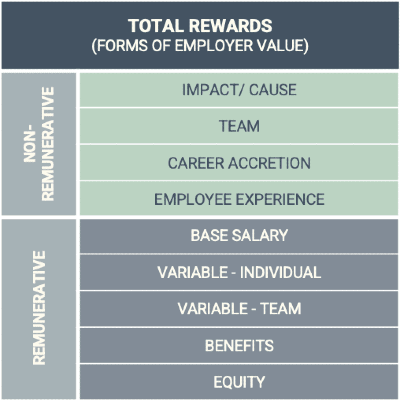 1. EVERYTHING is Compensation. Everything.
1. EVERYTHING is Compensation. Everything.
Compensation is the exchange of value between a company and an individual. When we think about compensation as remuneration, then compensation is a narrowly useful tool that will rarely generate extraordinary output (mostly in simple work environments.) When we expand our idea of compensation to total rewards, then the array of compensation possibilities and the unleashing of human potential becomes exponentially greater. And when we include the notion of relationship as an important implicit component of compensation, we unlock the full capacity of human potential in terms of productivity, creativity, problem solving, collaboration, fulfillment, and value creation.
2. Leadership > (Compensation + Management)2
Leadership (which necessitates a relationship) is the keystone of highly effective compensation plans. It is a dearth of leadership (not management) that constrains effective compensation and destroys performance. A vacuum of leadership creates dependency on management solutions for problems which are easily solved by leadership, or would otherwise not exist with the presence of adequate leadership. Supplanting the life-giving energy of leadership with management solutions generates significant real costs and exorbitant opportunity costs for a firm.
Poor leadership will dilute (if not destroy) the most masterfully-designed compensation plan. In other words, employees are more disincentivized by poor leadership than they will ever be incentivized by great compensation plans. This is especially endemically true in environments of complexity and rapid change.
Because growth-stage companies by definition actively add new layers of mid-level management, and because the vast majority of managers do not understand any of this, the natural tendency for such organizations is to over-use management solutions to address leadership challenges in motivating their teams. Leadership training — not management training (nor ad-hoc compensation changes) — is the solution.
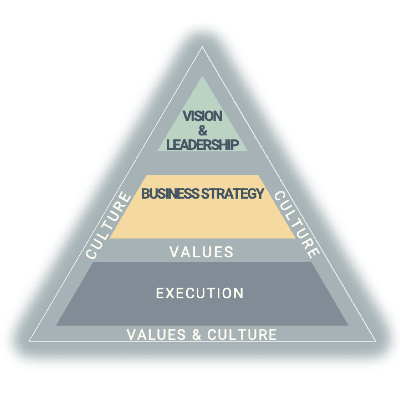 3. Compensation is Alignment
3. Compensation is Alignment
Just as vision must inform a firm’s strategy, and strategy must inform a firm’s execution, so too must compensation be in alignment with a) how shareholder’s (the owners of the business) define value, b) the CEO’s vision and the firm’s strategy, and c) the capability and ambitions of your people.
4. Manage the Paradox (Unleashing & Focusing Capability)
Where relationship is foundationally present, total rewards naturally unlock energy, human potential, and value creation. It requires the substrate of leadership to sustain, which can be hard and expensive to scale. The natural urge of leaders is to seek systemized performance-management processes and tools. Systems naturally scale, but they are an inadequate proxy for leadership. Performance management naturally focuses energy (mostly by constraint), but it provides measurability and eventual-predictability. But systems and predictable-measurability are antithetical (if not all together poisonous) to an utterly invaluable relic — innovation. Make no mistake, innovation and efficiency are natural enemies. Use compensation carefully to reinforce what is most important to your firm.
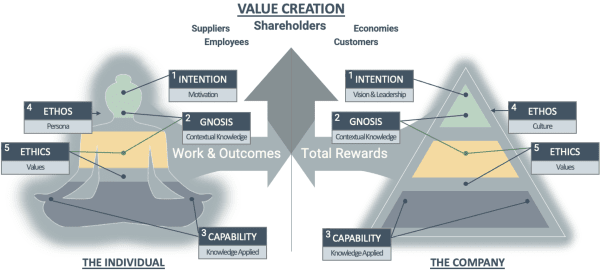
5. Complexity and Change are Queen
The two most significant internal-environmental factors that determine which compensation strategies to employ are:
- Problem-solving complexity
- Rate of change
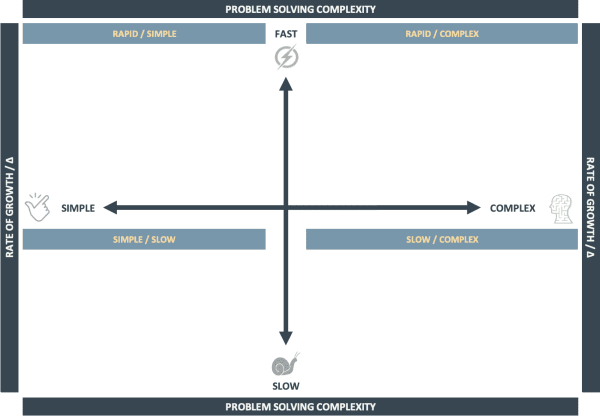 In a simple problem-solving environment, marginal increases in extrinsic rewards will produce (at best) commensurately marginal increases in contributions. In a complex problem-solving environment, where rate of change is high, increasing extrinsic rewards can actually subvert a human’s intrinsic motivational system. We use the term “motivational eclipse” to describe this phenomenon.
In a simple problem-solving environment, marginal increases in extrinsic rewards will produce (at best) commensurately marginal increases in contributions. In a complex problem-solving environment, where rate of change is high, increasing extrinsic rewards can actually subvert a human’s intrinsic motivational system. We use the term “motivational eclipse” to describe this phenomenon.
Where there is rapid change or complexity, learning-adaptability becomes the "x-factor" for group performance, not knowledge. The gateway to learning is motivation, ie. interest, not to be confused with passion, which actually damages learning. Therefore:
M + K = L = Success
Where M is Motivation and K is a nominal amount of Knowledge and L is Learning Adaptability.
6. Too Much of a Good Thing is a Thing
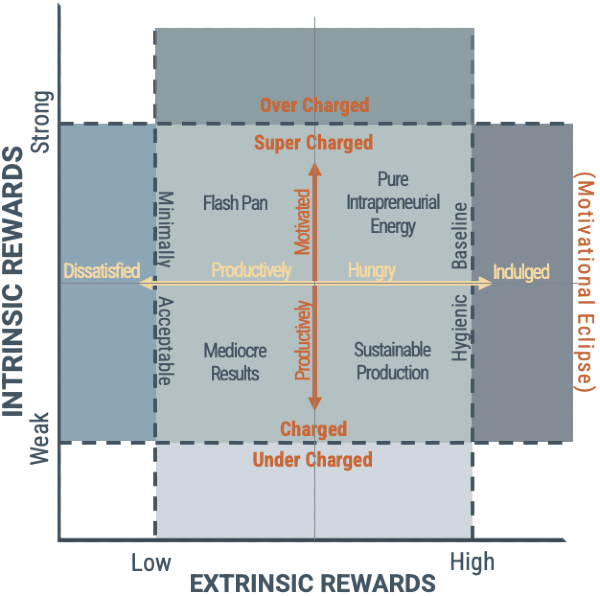 Intrinsic motivation (autonomy, mastery, relatedness and purpose) fuels the highest levels of human commitment and output, but extrinsic factors only moderate an individual between minimally acceptable and baseline. Both intrinsic and extrinsic rewards are necessary and insufficient. Both have critical advantages and both have steep moments of diminishing returns when over-played.
Intrinsic motivation (autonomy, mastery, relatedness and purpose) fuels the highest levels of human commitment and output, but extrinsic factors only moderate an individual between minimally acceptable and baseline. Both intrinsic and extrinsic rewards are necessary and insufficient. Both have critical advantages and both have steep moments of diminishing returns when over-played.
Extrinsic rewards are hygienically necessary, but they have an instant moment of diminishing returns AND will subvert the intrinsic drive. Still, intrinsic drive can short the viability of human’s extrinsic/ temporal world, a.k.a. “Dysregulation”.
7. Understand the Three Key Properties of Compensation.
There are three dimensions of all remunerative compensation – each having two possibilities - that determine its fit-ness for the outcomes leaders are seeking. They are:
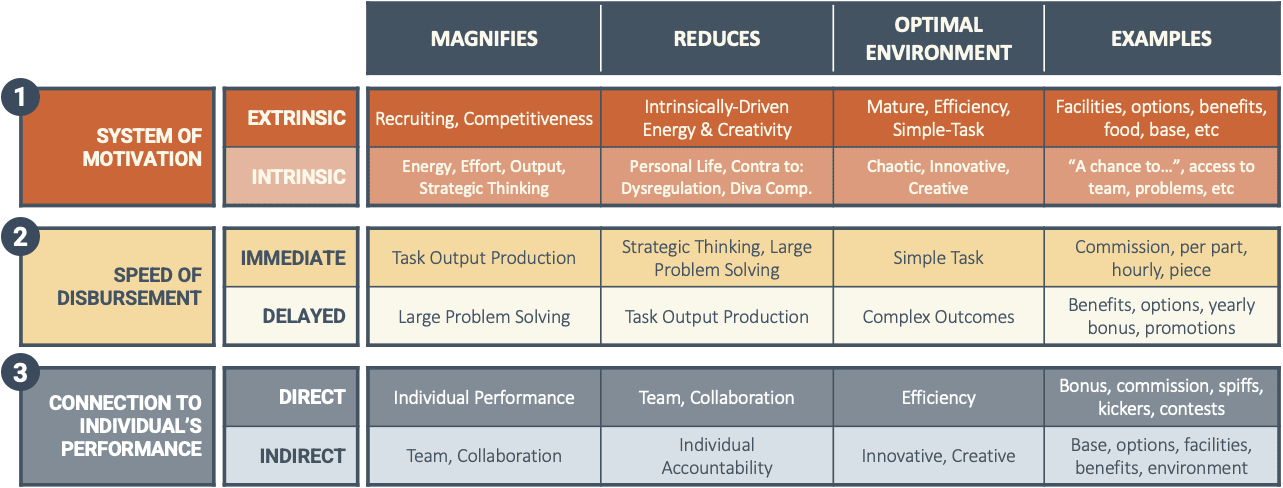
For example, stock options are an extrinsic, delayed, and indirect form of compensation. Therefore they are a poor tool for incentivizing short term, extraordinary individual-contributor objectives. But stock options are a great tool for incenting long-term, team-level, strategic outcomes.
8. All Types of Compensation Have a Downside
More accurately stated, every form of compensation magnifies certain outcomes AND reduces other outcomes. It is easy to envision how a form or method of compensation might incent certain behaviors, but all too often, leaders do not think through the contra-outcomes that those forms of compensation will also create. All change is accompanied by destruction, and this is especially true in compensation. Understanding the downside of every compensation decision ensures success.
9. ALL Companies Have Cycles
Structure compensation for both acceleration AND the moment of deceleration of growth. In private equity, an overly inflated valuation now means the company MUST make a certain valuation in 2-3 years. If a company is over-valued today, just as sure as the sun rises, the corrective day will come for that company. That will be a very painful day for virtually all stakeholders. Entrepreneurs are wise to seek high valuations, but ones that will not cause a harsh corrective moment later. The exact same concept is true in the world of compensation. If a company is making loads of money and growing at an unearthly rate, it's easy to use cash excessively to motivate employees. But when – not if – the company decelerates its growth, investors will have big questions about spending. Those conversations and those corrective moments are the stuff of deep, dark, sleepless nights filled with unabated anxiety for a CEO. A friendly word here; an ounce of thoughtfulness now saves about 10 years of lost life-energy later. Structure compensation plans for both growth AND moments of deceleration.
10. Polarize, Don’t Plagiarize
To “win” at compensation, companies/ leaders must seek to polarize the talent economy, and not plagiarize their competition’s practices. This is a book unto itself, but the key to succeeding is this: stop having exit interviews to understand why an employee has left the company, and start talking with employees about why they stay and why they engage.
If this is what you offer employees compared to your talent competition:
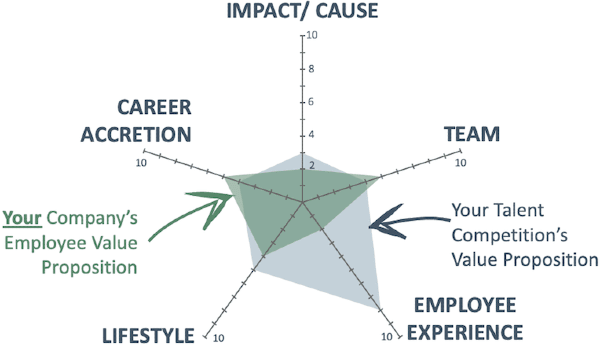
It may be tempting to do this as a response:
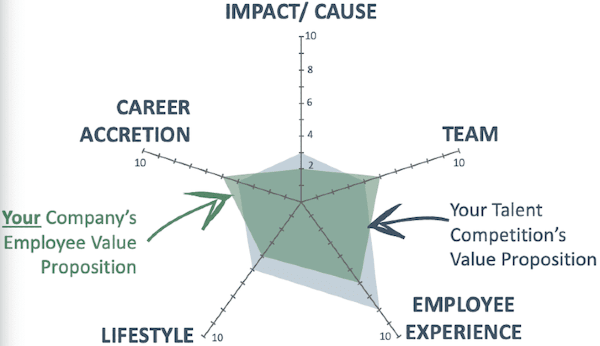
But trying to emulate your competition only commoditizes your firm’s brand in a strong talent economy. Instead, do this:
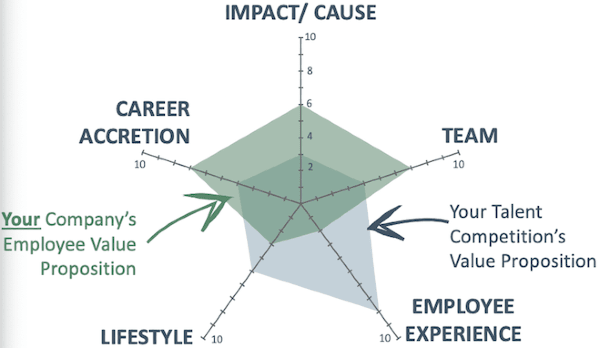
 TechBuzz welcomes Dennis Wood as a guest author-expert on growth, scaling, leadership, and people strategies. Dennis is the CEO of boardlevel.io where he helps leaders navigate human capital issues specific to the early and growth stages. Dennis can be reached at dennisw@boardlevel.io
TechBuzz welcomes Dennis Wood as a guest author-expert on growth, scaling, leadership, and people strategies. Dennis is the CEO of boardlevel.io where he helps leaders navigate human capital issues specific to the early and growth stages. Dennis can be reached at dennisw@boardlevel.io









